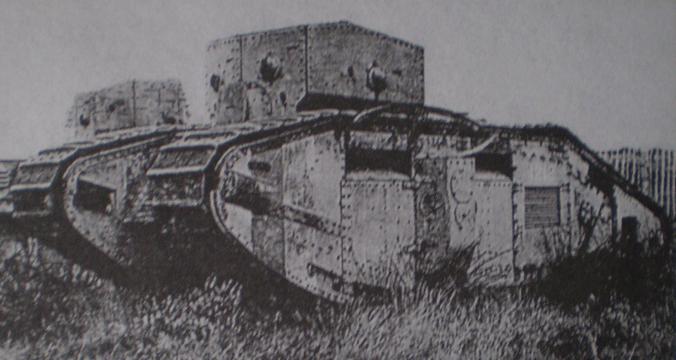Development history
The success of the Mark A “Whippet”, as a cruiser or “cavalry” tank, able to disrupt enemy lines and exploit breakthroughs, made its way into the War Office. It was decided in 1917 to give a successor to William Tritton’s pet project. The Whippet, created by William Rigby, the chief engineer of Tritton, was the first “cruiser”, relatively light and fast compared to the Tanks. It suffered from numerous flaws that needed to be addressed, like a lack of power, rough ride due to unsprung suspensions, and a complex steering system. It should be noted that the lack of a proper suspension never impeded the production of numerous such models. The resented roughness of the ride was lessened by the slow speed, very near to infantry pace. When the speed increased, that was another story.
Anyway, the project called “Mark B” was quickly developed to address these issues, but not by Tritton. It was designed by Lieutenant Walter G. Wilson, who had left the early “tank team”, as he was convinced he could create better models and had been recently promoted to the grade of major. He probably drew this vehicle as soon as July 1917. A mockup was built in late 1917 and presented to Major Philip Johnson of the Central Tank Workshops. The latter was impressed, but many delays occurred before a prototype was eventually ordered from the Metropolitan Carriage and Waggon Company. This was Tritton’s firm, which developed the rival Mark C “Hornet”, at the same time. It was ready for trials in September 1918.
Design
For this design, Wilson used elements of the heavy “Marks”, like the characteristic rhomboid hull. He also mixed some elements of the Whippet design, including the fixed turret, placed at the front, meaning the driver’s view was no longer restrained by the hull. This casemate was bristling with machine guns placed in ball mounts. There were two at the front, one on each casemate side, two in the hull doors/sponsons, and one at the rear of the casemate, giving a grand total of seven mounts. However, only four .303 (7.7 mm) French Hotchkiss light machine guns were carried, which could be moved from one location to another. This was done in order not to further impede movement in the already cramped interior. A supply of 2500 to 3000 cartridges was given. By default, the Mark B had a “female” configuration, but Wilson prepared a “male” design armed with 2-pdr short barrel guns, that existed only as a paper project.
The great novelty in the design was the addition of a isolating wall, separating the crew compartment from the engine compartment, which housed a 100 hp (75 kW) four-cylinder shortened Ricardo engine, coupled to an epicyclic transmission, a well-proven modern design. Two fuel tanks were protected by a bulkhead at the back, carrying 85 imperial gallons (386 l), that allowed a 65 mile (105 km) operational range in average. The top speed, due to a 5.6 hp/ton power to weight ration, was only 6 mph (10 km/h), but that was already twice faster than the heavy Marks. The armor, made of cold hard steel bolted on a frame, was 0.5 to 0.25 inches (14 mm to 6 mm) thick. However, there was no special lining inside to prevent spalling on impact. The frontal armor protection was innovative, with a sloped beak that provided even more effective thickness. Another innovation, devised to protect the tank and the following infantry from enemy gunners, was the ability to lay a smoke screen, with a device consisting in a sulphonic acid reservoir located over the exhaust pipe.
Production and service
A production of 450 vehicles was ordered even before prototype completion, later increased to 700. They were to be manufactured at the North British Locomotive in Glasgow and, later, at Metropolitan, Coventry Ordnance Works and the Patent Shaft and Axletree Company. The early ordnance name Mark A “Whippet” was quickly changed. A problem was soon detected, the engine compartment being difficult to reach from the inside and, at the same time, the allegedly superior rival Mark C was unveiled. With the end of the war cancellation came, and only 102 were produced. Only 45 were, apparently, taken into service by the British Army, while the remainder were probably stored and later scrapped. The Mark C was considered a better design altogether and, while the existing vehicles were phased out, two Mark Bs were shipped to the White Russian northern tank detachment. They were captured by the Red Army, which kept at least one in use until the thirties. A single Mark B saw action with the 17th (Armoured Car) Battalion during the Anglo-Irish War.
Medium Mark B specifications |
|
| Dimensions | 22.9 x 8.1 x 8.6 ft (6.9 x 2.7 x 2.6 m) |
| Total weight, battle ready | 18 tons (36,000 lbs) |
| Crew | 4 (commander, driver, machine-gunner, loader/mechanic) |
| Propulsion | 4-cyl Gasoline Ricardo, 100 hp (75 kW) – 5.6 hp/t |
| Speed | 6 mph (10 km/h) |
| Range | 105 km (65 mi) |
| Armament | 4 x Hotchkiss cal.303 (7.7 mm) machine guns |
| Armor | 6 to 14 mm (0.25 to 0.55 in) |
| Total production | 102 |
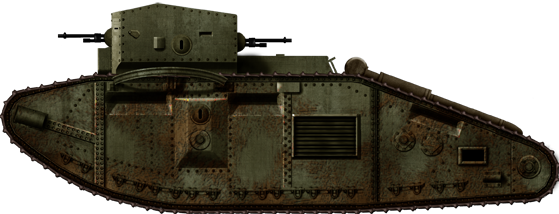
Medium Mark B in British service, after the armistice of November 1918. Wilson designed a tank that could fit inside a single standard railway flatcar. But this seemed an error, as it also limited its capacity to cross large trenches (contrary the Mark C), precipitating its demise.
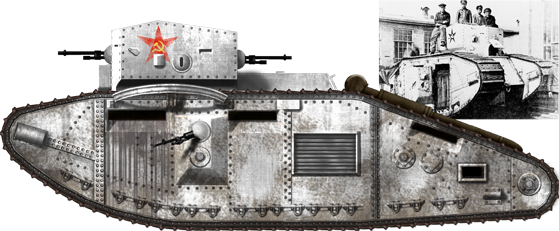
Russian (Red Army) Mark B in the early 1920s. The photo shows it was painted white, probably for the winter 1919 campaign.
Gallery
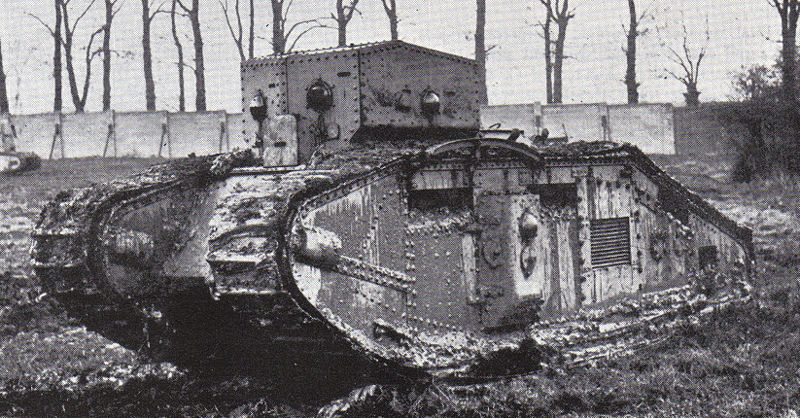
Mark B on trials, without machine guns.
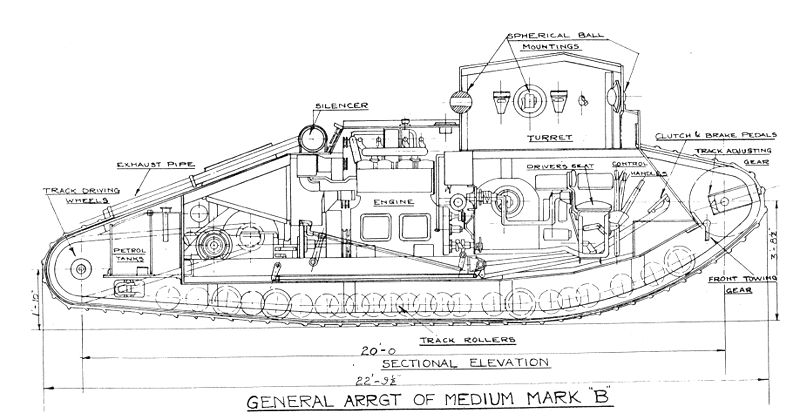
Blueprint of the Mark B.
Mark Bs stored in the early 1920s. The type was quickly phased out in favor to the Mark C.
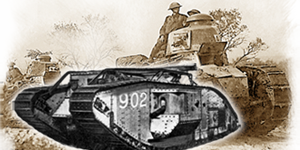
The Great War
 Austria-Hungary
Austria-Hungary Belgium
Belgium British Empire
British Empire France
France German Empire
German Empire Italy
Italy Russia
Russia USA
USAWW1 tanks posters


